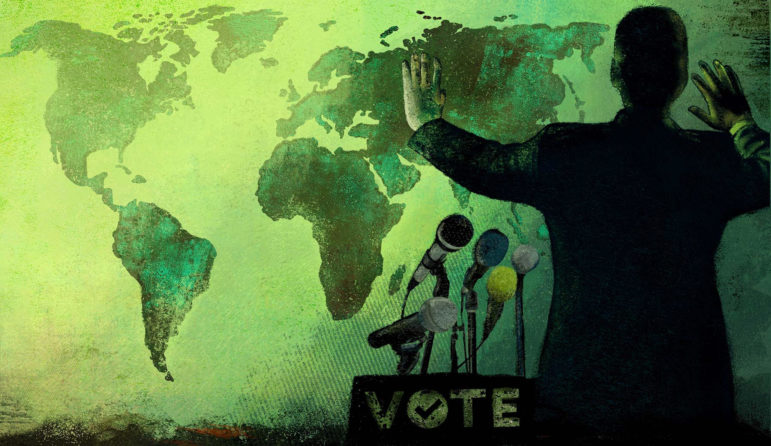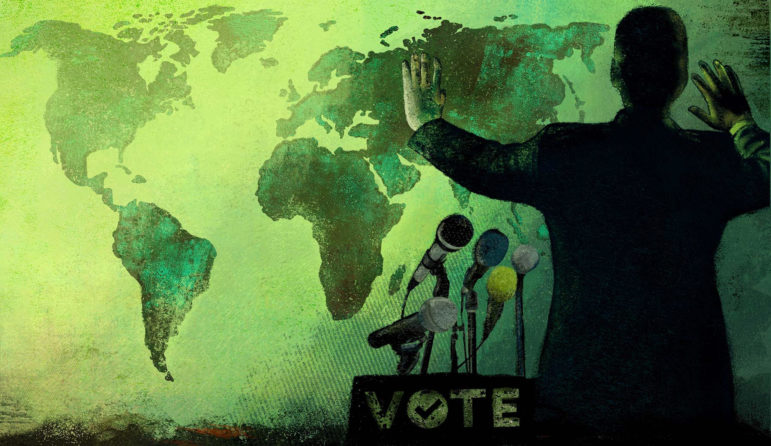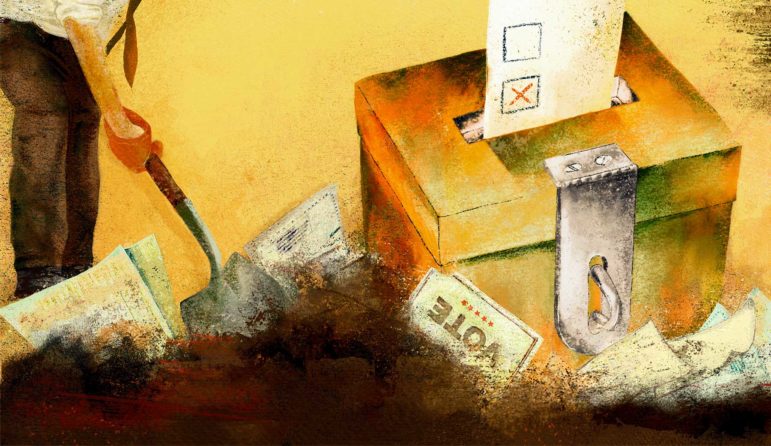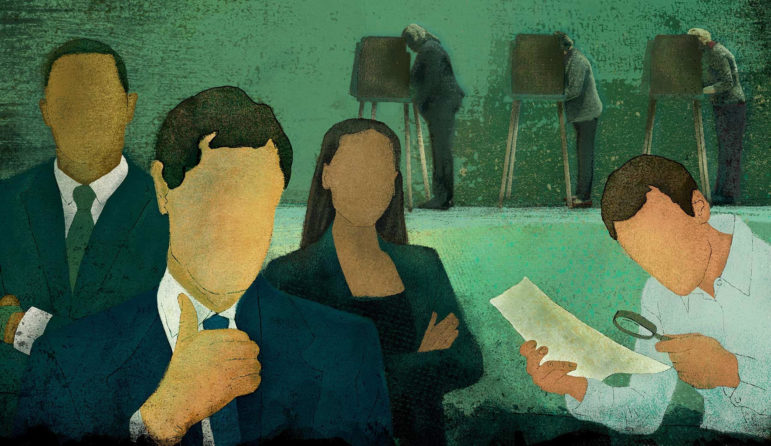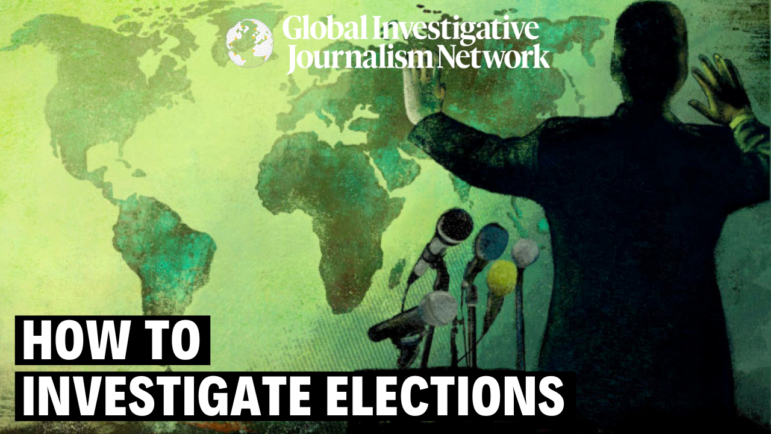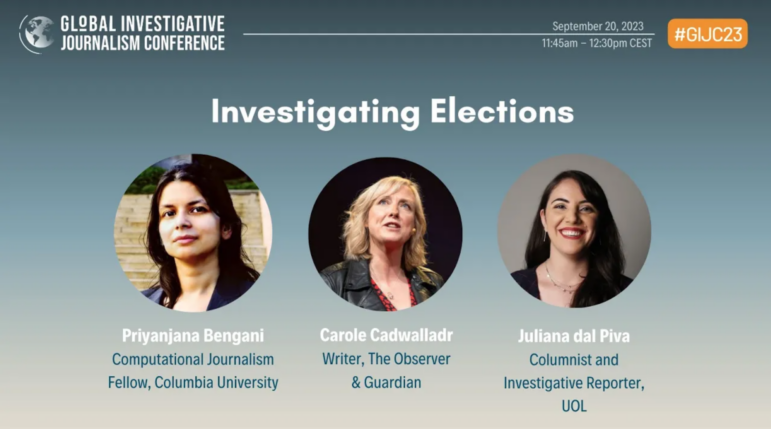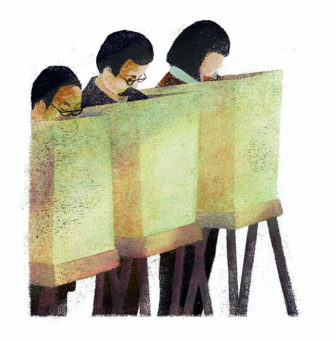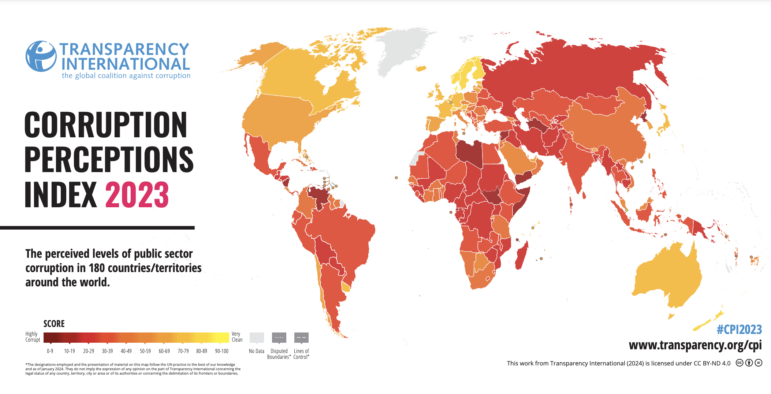

Illustration: Marcelle Louw for GIJN
Elections Guide for Investigative Reporters: Chapter 2 — Preparing for Elections
Read this article in
Guide Resource
GIJN’s Elections Guide for Investigative Reporters
Chapter Guide Resource
Elections Guide for Investigative Reporters: Introduction
Chapter Guide Resource
Elections Guide for Investigative Reporters: Chapter 1 — New Election Digging Tools
Chapter Guide Resource
Elections Guide for Investigative Reporters: Chapter 2 — Preparing for Elections
Chapter Guide Resource
Elections Guide for Investigative Reporters: Chapter 3 – Investigating Candidates
Chapter Guide Resource
Webinar: How to Investigate Elections
Chapter Guide Resource
Video: GIJC23 – Investigating Elections
National elections are supposed to be credible, fair contests for the right to govern that are adjudicated by laws, and decided by properly informed voters. Investigative reporters examine the gap between what should happen and what actually is happening in these contests, and who is behind efforts to subvert the will of the people.
Experts say preparing to investigate this gap involves learning the rules and laws that govern the contest; setting up tools and methods to keep you, your data, and your sources safe; and listing the trends, sources, and threats that could trigger worthwhile enterprise stories and investigations.
In this chapter, we highlight both the rules and technical trends that reporters need to be aware of, such as how voting procedures are changing in different regions and how to spot evidence of foreign interference. We also provide a framework for how journalists can monitor creeping authoritarianism in democracies, including a list of anti-democratic tactics that autocrats increasingly use to tip elections their way.
In addition to a list of recommended resources to keep reporters safe on the campaign trail, we also share several tools designed to handle both the hard deadlines and the flood of information that characterize national elections. For instance, leading journalists say that certain measures taken early in an election cycle – like using a simple tool to find Twitter lists for political activist groups, setting up automated alerts for website changes, and exchanging phone numbers with key election officials — pay rich dividends closer to election day.
Laying the Groundwork
Know the Rules
Roughly half the countries that hold elections use proportional representation models, in which parliamentary seats are allocated to a party in proportion to its percentage of the overall vote, giving smaller parties a greater chance of influencing new laws. Roughly a quarter of claimed democracies use winner-take-all models – where electoral districts have only one representative, and the candidate winning a plurality of the vote is elected – and another quarter feature a combination of the two basic systems. (See the variety of subtle differences between systems in this database). But with each election, investigative journalists must confront unique rules that often change. Below is a list of resources for understanding your country’s local ground rules:
- Familiarize yourself with the laws and processes for local electoral management, constitutional provisions, and civic organizations in each country. Also check sites like the Electoral System Design Database, compiled and updated by the International Institute for Democracy and Electoral Assistance (International IDEA). This resource offers detailed and comparative data on the election architecture of 217 countries and territories.
- The ACE Electoral Knowledge Network collects electoral data from more than 200 countries, on 11 polling-related topics.
- The Open Election Data Initiative sets out the mechanics of election processes in detail and offers some useful campaign finance case studies from Latin America. It also explains the kind of data that can and should be publicly available, and provides an analysis of the public availability of 14 categories of election data across 17 Latin American countries through 2014. The analysis is now outdated, but the graph clearly shows the data-availability differences between liberal democracies and autocracies, and could give reporters elsewhere useful clues on what kinds of election data to seek.
- Ask local academics, pro-democracy NGOs, election experts, and election monitoring groups – like the 251 groups listed here – to share updated links for the rules that are supposed to govern your local contest.
- Learn about the voting equipment and vendors earmarked for the coming election. While The Verifier database created by the VerifiedVoting nonprofit is US-specific, this easily-searchable tool contains remarkably granular detail about everything from commercial ballot-marking devices and internet voting systems to optical scanners and electronic poll books – many of which are also used in other countries’ elections.
- Learn the history of key elections. Find your country’s voter participation history in this excellent, global Voter Turnout Database. In addition to local election management archives and media research tools like LexisNexis, check out the privately-compiled Adam Carr’s Election Archive, which – while not comprehensive – integrates global election results and statistics with maps, and preserves some historic data removed from electoral body websites.
Know the Referees
- Check out the authority and make-up of the election managers at sites like Electoral Management Design Database, from International IDEA. This includes searchable data on election bodies and commissions, terms of office, select officials, and appointment mechanisms.
- Devote time at the start of the election cycle to identifying two or three key election officials, developing relationships with them, and exchanging phone numbers. Veteran political reporters stress that election officials are swamped on election week, and hard to reach unless they know you – and that these people will be crucial sources for understanding both the rules and problems in the process.
- Set up Twitter account lists of election officials. During the 2020 US election, First Draft reporter Diara Townes compiled a list of Twitter feeds for 47 of 50 state secretaries of state, who serve as the top election officials in those US jurisdictions. With this resource, reporters could view in one virtual location these officials’ real-time concerns and decisions Experts also recommend creating Twitter lists of well-connected political reporters, especially those in far-flung provinces or states. For instance, in the same US election, The Washington Post compiled a list of leading political journalists to follow in each state in this Twitter list.
- Review the basic principles of the media’s role in elections – and international norms on issues from campaign hate speech to media regulation – in the United Nations Development Programme’s detailed Media and Elections guide.
Safety in Election Reporting
Truth-telling journalists, as well as their data and sources, can become targets for election bad actors who don’t want voters to know the facts that should inform their choices. Good digital hygiene and smart safety precautions are essential. Some best practices to follow:
- Cyber safety dashboard. Find a suite of free or low-cost password managers, malware protections, and encryption tools in the comprehensive GCA Cybersecurity Toolkit for Journalists, which was developed with the particular threats related to elections in mind. Assess the digital hygiene options that suit your location or skill level best in GIJN’s Digital Security guide.
- Use encryption on your devices. There are many excellent free options, but most experts endorse Signal for communications, Protonmail for emailed documents, post office boxes for paper documents, and VeraCrypt for devices at risk of physical seizure.
- Physical surveillance: If you suspect you or your sources are being physically followed by agents of political campaigns, special interest groups, or political extremists, then consider the tips and steps set out in this GIJN story. However, if you suspect you’re being followed by police or state intelligence agents, then consult human rights lawyers, or human rights security nonprofits, like Citizen Lab or Electronic Frontier Foundation. Check the tips in this story if there is a risk that state agents might raid your home.
- General tips for physical safety while covering elections. Check out CPJ’s updated Journalist Safety Kit for elections. The group also published a safety guide for the 2021 Mexico elections.
- Physical safety at political protests. Check out CPJ’s comprehensive toolkit for safety in political flashpoint events – from clothing options to COVID-19 and tear gas risks.
- Digital safety at riots and election protests. Check out PEN America’s guide to protecting your devices and data at events with a risk of surveillance, arrests, and phone confiscations by authorities.
- Google Voice. With harassment by hyper-partisan supporters or ideological extremists a particular threat in elections – especially for women journalists – consider setting up a free, secure Google Voice account, if available in your country. It is a voice over internet protocol (VoIP) phone service, and can merge several phone numbers into one and act as a “virtual burner phone.” It also provides searchable voicemail.
Tools to Handle the Time and Scope Challenges of Elections
Elections are characterized by both a series of hard deadlines – from voter registration to campaign filings and election day itself – as well as huge volumes of dynamic information that build ahead of those dates. Here are some tools that can reduce the stress.
- Use Klaxon alerts. Reporters don’t have the time to check for changes on the dozens of election-related websites – whether official voter information sites or special-interest and campaign sites. So try the open-source Klaxon app. Developed by the nonpartisan US group The Marshall Project, this tool automatically flags content changes to bookmarked sites, and even portions of webpages, then alerts you via email, Discord, or Slack.
- Archiving is a must. Since partisan webpages are routinely deleted – and their content often denied following public criticism – use the Hunch.ly plugin to automatically archive your own online searches. And use the Wayback Machine to resurface altered or deleted webpages you may not have visited. See the guide to this tool’s updated features in this GIJN story, submitted by the manager of the Wayback Machine.
- Consider interview auto-transcription. Try Trint or, for a small fee, the artificial intelligence-powered Otter to transcribe and keyword-search your election-related interviews. While these companies state that recordings and transcripts are secure, and never shared with third parties, it’s worth checking this recent piece on transcription service data security. Disinformation expert Jane Lytvynenko says screenshots often aren’t good enough for preserving evidence – and suggests that reporters rather nail down digital evidence with this auto-archiving tool. “Screenshots can be easily manipulated, they don’t preserve the metadata of the page, and they’re not always admissible in court,” she notes.
- Plan reporting around election violence threats. Local human rights groups and election monitors are often good sources for flagging potential conflict flashpoints, and diligent social media keyword searches have revealed plots of violence at rallies. Lytvynenko says searches of the Telegram platform – finding channels via Google with site:t.me (plus keywords), and analyzing them with tgstat.com – are particularly useful for flagging planned intimidation incidents in many countries. For Twitter, try searches in the new WeVerify Twitter SNA tool, and CrowdTangle for Facebook. Also, check out the Electoral Risk Management Tool, developed by International IDEA.
- Search election-topic Twitter with Bellingcat’s “wildcard list trick.” Lytvynenko says the following search sequence in Google: site:twitter.com/*/lists “LISTNAME” (where you add the keywords you need) – represents a potent tool for finding and following several public Twitter lists matching the election subject you’re investigating. For Facebook groups, try this sequence in Google search: site:facebook.com/groups “keyword.”
- Monitor police chatter for possible election violence – if you can, and if it’s legal: Track crisis incidents near election-related venues in real-time with police and EMS radio scanner apps like OpenMHZ or 5-0 Radio Pro (which includes some emergency feeds from Chile, Russia, Japan, Sweden, Australia, and a few others). Flag any evidence of inappropriate law enforcement support for voter intimidation activity.
- Set up a spreadsheet for election Boolean searches. Nancy Watzman – a journalist-consultant to the NYU Cybersecurity for Democracy Project – says one worthwhile habit is to collect unusual, hyper-partisan, or “dog-whistle” terms you come across during the whole election cycle. She recommends that reporters drop these into a spreadsheet, divided between issue categories, which they can then mine for Boolean search combinations closer to election day. Boolean terms help laser-focus Google searches to the results you need. (Watzman used such a spreadsheet to search for threats after the US January 6 Capitol riot.)
- Establish yourself as a destination for election whistleblowers. Investigative editors stress that a record of quality, courageous, non-horse-race political reporting is crucial for attracting leaks and tips from campaign insiders. Of course, there might be no shortage of “oppo” claims about wrongdoing from rival campaigns, but claims from staff within campaigns, or within law enforcement, tend to trigger some of the biggest election stories.
Election Trends to Monitor
In addition to the unique local issues that arise in each election cycle, there are international trends that investigative reporters need to watch closely. These trends arise from demographic shifts, from new technologies or digital threats, and from ideas that flow from governments and election authorities watching each other. Some of these imply new contracts and public spending; some pose potential threats to the integrity of the vote; some are intended to promote democracy, but could confuse voters – and all represent possible story leads.
Perhaps the most dangerous of these trends is the “autocrats’ playbook” – in which, increasingly, authoritarian leaders copy repressive election tactics from each other. (We explore these tactics below.)
However, David Levine, elections integrity fellow at the Alliance for Securing Democracy, and Sam van der Staak, head of the Europe program at the International Institute for Democracy and Electoral Assistance (International IDEA), point out other notable trends to watch for:
- Political media monopolies. Experts warn of a sharp trend toward media ownership – especially TV stations – by incumbent politicians, oligarchs, and business allies of autocrats, leading to skewed election coverage and smears of independent media. Van der Staak points to a new law in Poland banning non-European ownership of local media, and suggests that journalists elsewhere watch for copycat legislative moves. “Media ownership is something we know too little about,” he says. “But we’re seeing TV channels becoming owned by big political interests, and laws are being written that are so tight that those who fight back about the bias have to litigate for years – and by the time they win the court case, the election is over and it’s too late.” Van der Staak adds: “In Eastern Europe and the whole of the Western Balkans, you see most channels have become extremely politicized, and either owned directly by politicians or by offshore companies.”
- Foreign Interference. Check out the Authoritarian Interference Tracker, produced by the Alliance for Securing Democracy, which details and maps incidents of illicit campaign financing, cyber attacks, and misinformation campaigns by foreign actors against 40 countries since 2000. Also, try cross-checking the results against the Foreign Interference Attribution Tracker, created by DFRLab, which focuses on the actors behind interference in the US 2020 election, and includes assessments of impact. Watch for country-specific tools that pop up ahead of elections – like the French Election Dashboard on Foreign Narratives that launched a month before France’s April 2022 election. That tool’s designer, Bret Schafer, told GIJN that it is designed to show the trending messages that foreign — but especially Russian state-owned — media is feeding to French voters. He says an even more powerful version will be released ahead of the US midterm elections in November.
- A return to manual voting systems in the West. Levine says Russian interference and hacking concerns in the 2016 US election has prompted several developed countries, including the Netherlands, to reconsider the safety of digital elections, and return to manual balloting.
- A trend toward more digital election infrastructure in young democracies. Van der Staak says the legacies of repression have boosted automated systems – as well as the potential for corruption – in many younger democracies and former Communist-bloc countries. “In some countries in Central and Eastern Europe, people still trust the electronics more than the people, because they have histories of distrust in institutions,” he explains. While some systems are sound, Van der Staak says many electronic and digital election systems remain vulnerable to manipulation and corrupt contracting. He says countries that adopt biometric identification systems to compensate for low levels of passports and driver’s license IDs are at particular risk of corruption, due to their high procurement costs. “As a journalist, I would look at how all that has been decided and procured; big scandals often emerge from that,” he notes.
- More voting outside the booth. The COVID-19 pandemic scrambled the voting systems of many countries in 2020. As a result, “special voting arrangements,” including postal, electronic, and proxy voting, as well as voting mechanisms for diaspora populations, grew more popular. “There really is a trend of countries adopting those new ways of voting, because new technologies enable it, but it’s also more difficult for journalists and observers to monitor,” Van der Staak says. Countries like Moldova, Bulgaria, Lithuania, and other eastern European states are considering more electronic voting, while Albania is among the nations investigating online voting for citizens living outside the country.
- Governments using data privacy as a pretext for hiding contributors. Van der Staak says some politicians and legislators outside Europe use the region’s strict GDPR data protection regulation as an excuse for less transparency around campaign financing. “Data protection has been given a positive reputation, but what I see in some countries outside the EU is that they use it as an excuse to hide who is really behind huge donations. They say: ‘We can’t disclose names of donors because of data privacy.’” he explains. “They tweak parts of the GDPR to suit their purpose of power. Journalists can check these claims.”
- Denial of service (DOS) attacks on official election websites. Simple denial of service cyber attacks, which paralyze websites by overwhelming their web servers with traffic, are increasingly used to sabotage political foes and can be used, for instance, to disrupt targeted voter registration sites ahead of sign-up deadlines. Van der Staak says journalists should watch for the greater threat these attacks pose for trust in the integrity of elections. “We tend to see cyber threats as Russian hacking, but the most common form of cyber interference is a DDos attack on the website of electoral commissions,” he says. “It’s often a way just to suggest that the election body doesn’t have its house in order. People can start to wonder if the whole election is no longer legitimate. The closer these are to election day, the more impact they’ll have.” He adds: “Sophisticated cyberattacks could just as equally come from criminal groups – that’s the fear, for instance, for the electoral commission in Mexico – or from a 16-year-old hacker who wants to show how smart he is.”
How to Spot Plays from the Autocrats’ Playbook
While the end of a democracy was once easy to identify – with a military coup, or edicts banning multi-party elections – the slide toward autocracy is harder to recognize today. Now, the erosion of democratic institutions is commonly veiled in legal facades and pretexts of emergency while state-sponsored election violence is kept to a minimum, or blamed on third-party actors.
Researchers have found that elected autocrats increasingly learn effective tactics from each other, and sometimes even directly share resources and the same dirty tricks advisors. For instance, Foreign Policy magazine recently detailed how Nicaragua’s cybersecurity and “foreign agent” laws “appear to be carbon copies” of the same repressive laws enacted by Russian President Vladimir Putin’s government in Russia in 2012.
According to Hungarian political scientist András Bíró-Nagy, Viktor Orban won his fourth consecutive election in April 2022 thanks to a combination of tried-and-tested strategies: scaring under-educated voters with phantom public enemies; marginalizing opposition parties with biased campaign regulations and media coverage; and raiding public coffers for unsustainable hand-outs months before election day.
One example of the switch from old-school tactics – like stuffing ballot boxes and violent crackdowns on opposition supporters – to the new autocrats’ playbook was provided by Robert Mugabe’s government in Zimbabwe. In 2008, Mugabe’s party agents found out, too late, that they could not stuff ballot boxes fast enough in the right districts to win the first round of presidential elections. This was followed by brutally violent oppression of the opposition to ensure a “win” in the run-off election – tactics that drew international condemnation. However, in the lead-up to the 2013 election, Mugabe adopted a series of new strategies to defeat the will of the majority by ensuring the playing field was titled in his favor. Journalists need to watch for, and anticipate, these attempts to manipulate elections as they arise.
Watch Out for These Tactics:
- Control the media landscape. In Hungary, Viktor Orban’s new government quickly established a Media Council to promote self-censorship, with heavy sanctions for critical reporting. In Serbia, oligarchs and allies of its autocratic president acquired controlling interests in almost all commercial TV stations, which were then favored with public funding grants, and which relentlessly echo state media. Tip for independent media: Search media ownership databases for connections early on, and band together with trusted fellow newsrooms to hire a robust legal defense team.
- Accuse the press or opposition of the same election-related crimes; then amplify. Many authoritarian candidates have learned to respond to evidence-based accusations – whether campaign corruption or personal misconduct – by brazenly accusing the investigators who surface the wrongdoing of exactly the same crimes. Once amplified by supporters on social media, authoritarians use this tactic to confuse the public, and defuse the original allegation. Tip: Use visualizations to compare the timelines and evidence of the ‘rival’ accusations, and double-down on your original investigation.
- Outsource election-related violence to gangs – and turn a blind eye. While “old-school” authoritarians mobilize state security services to attack freedoms directly, KRIK editor Stevan Dojčinović says “new age authoritarians” use the opposite strategy: freezing state agencies, and instead unleashing private companies and street gangs controlled by allies of the autocratic leader. Tip: Use facial recognition and reverse imaging tools to find street thugs together with campaign officials – but follow journalist safety guides closely when covering political street gangs.
- Stoke fears about minor social issues, then blame minorities or out-party groups. Many populist campaigns find fear and blame strategies so effective that they abandon policy platforms altogether. Tip: Avoid horse-race journalism and public sentiment polls on “culture war” issues, and focus on policies that affect the lives of voters and assault on their ability to know and choose.
- Marginalize or discredit independent media. Russia’s original “foreign agents” law of 2012 – requiring NGOs and news organizations with any international support to effectively declare themselves as spies – is one of the most popular tactics to emulate among authoritarians. Tip: Foster solidarity with the remaining independent outlets, and ensure your revelations can’t be silenced by collaborating with independent media in neighboring countries.
- Follow the policy progression of “forging, bending, and breaking” laws. Using Poland and Hungary as case studies, researchers Andrea Pirro and Ben Stanley showed the power-consolidation policy pattern of authoritarian parties. First, introduce policies on populist “non-issues” that don’t break the letter or spirit of existing laws, often created on the basis of claims about morality or history. Second, promote policies that generally boost the power of the executive and violate the spirit of existing laws, and adopt election promises that justify this norm-breaking with rhetoric decrying “politics as usual.” And, third, enact new laws that break with both constitutional and international norms to ensure continued rule. Tip: Don’t accept the increasingly unaccountable reality created by these leaders – and report, instead, as if the country remains a full democracy, with the highest principles of accountability. Dig into the hidden deals between the executive and the legislature.
- Disband independent investigative bodies that can expose corruption at the highest level. New authoritarians defang or disband independent bodies like special prosecutors and public watchdog investigative units, and redeploy their staff into larger cabinet-controlled departments, like the police. In 2009, South Africa’s then-President Jacob Zuma brazenly disbanded the elite Scorpions unit that had investigated him for corruption when he had served as vice-president, and created a new, watered-down unit largely limited to investigating organized crime. Tip: Try to find whistleblowers among newly defanged government investigators, and pick up where they left off on executive power abuse cases.
- Pack the judiciary with personal allies. Autocrats use these alliances to, for instance, schedule elections that most harm opposition voter registration, and at the last possible moment. Tip: Investigating judges and their ties to government officials can trigger police harassment and punitive court orders against journalists – but brave reporters at independent outlets like Slidstvo.info have shown it is doable. Also, prior judgments can be searched by keyword, and their connections can be traced through social media and reverse imaging searches.
- Pack “independent” electoral commissions with partisan cronies. In 2013, the person appointed as chair of Zimbabwe’s election management body was a former politician with the ruling ZANU-PF party. Tip: Check the appointment and tenure rules for your electoral commission or management body through this database.
- Exploit nativist fears by rewriting history, targeting outsiders, and casting national and majority religious identities as the same. These are three of seven common “key plays” in warping elections outlined in the “Democracy Undone” project by reporters at GroundTruth. They looked at borrowed tactics between nationalist leaders in India, Brazil, Hungary, Poland, Colombia, Italy, and the US – all of which were amplified and weaponized by their supporters on social media. Tip: Highlight the benefits of diversity and immigration, and point to the immigrant histories of xenophobic party officials.
- Declare fraud, or foreign plots, if you lose the necessary vote count, and exaggerate small errors. Tip: As the Columbia Journalism Review pointed out in 2020, reporters need to contextualize small examples of counting errors as normal, and do so prominently and graphically: “There will be actors trying to convince the public that every small error is evidence of a rigged system. Normal stuff goes wrong on Election Day; there are machines that don’t work, polling places that lose power or open late, voter rolls that get misdelivered.”
“Democracy is at a pretty critical inflection point,” says the Alliance for Securing Democracy’s Levine. “There are important questions for journalists to ask even about successful elections – especially around whether voters have the correct information to make informed choices.”
Note: If you know of a great new tool or database that can help reporters dig into elections, please share it with us at hello@gijn.org. This chapter is part of GIJN’s five-part guide to investigating elections around the world. The Introduction, Chapter 1, Chapter 3, and Chapter 4 have also been published.
Additional Resources
Elections Guide for Investigative Reporters: Chapter 1 – New Election Digging Tools
Elections Guide for Investigative Reporters: Introduction
Essential Resources for the US Election: A Field Guide for Journalists on the Frontlines
 Rowan Philp is a reporter for GIJN. Rowan was formerly chief reporter for South Africa’s Sunday Times. As a foreign correspondent, he has reported on news, politics, corruption, and conflict from more than two dozen countries around the world.
Rowan Philp is a reporter for GIJN. Rowan was formerly chief reporter for South Africa’s Sunday Times. As a foreign correspondent, he has reported on news, politics, corruption, and conflict from more than two dozen countries around the world.

